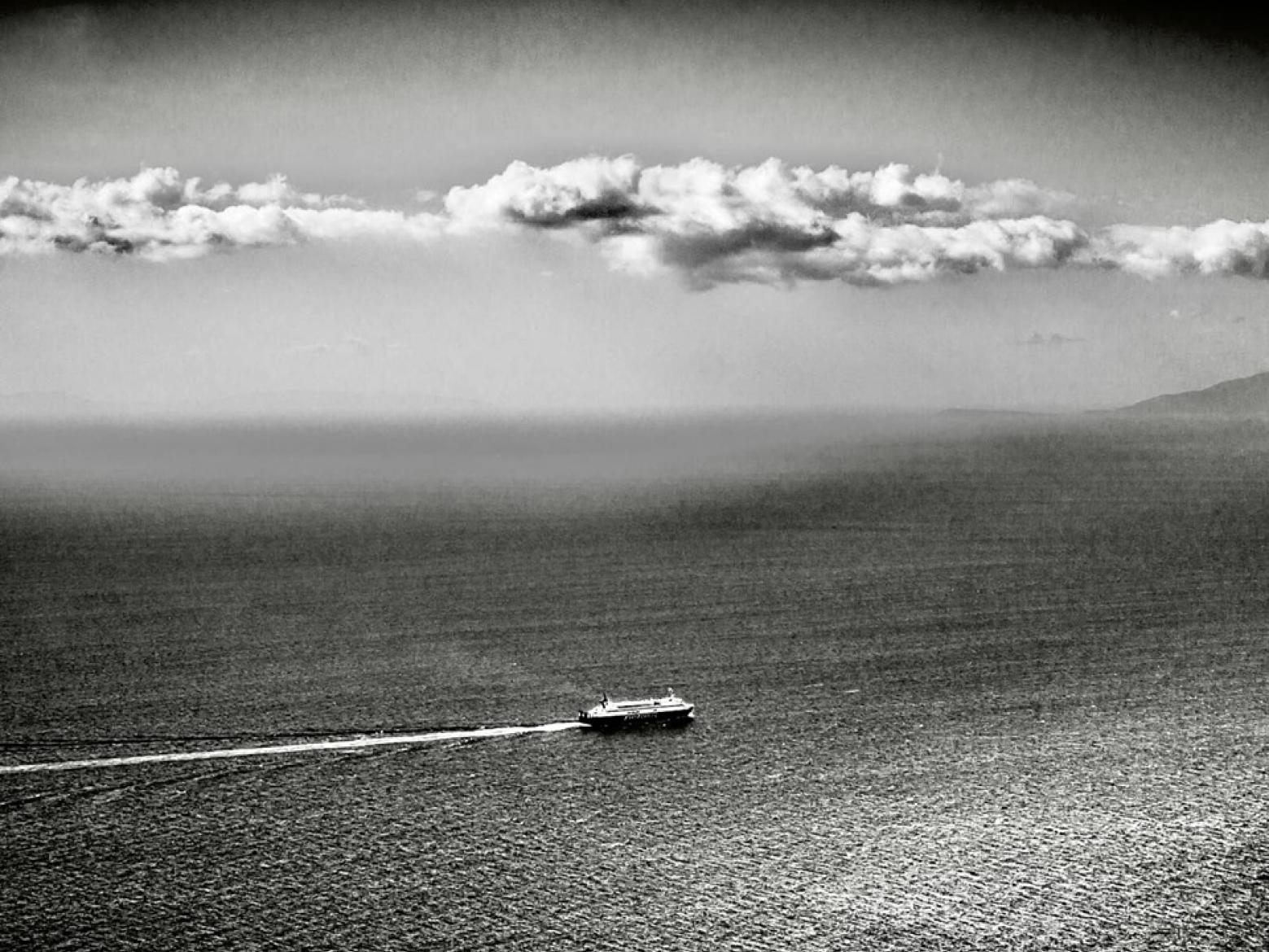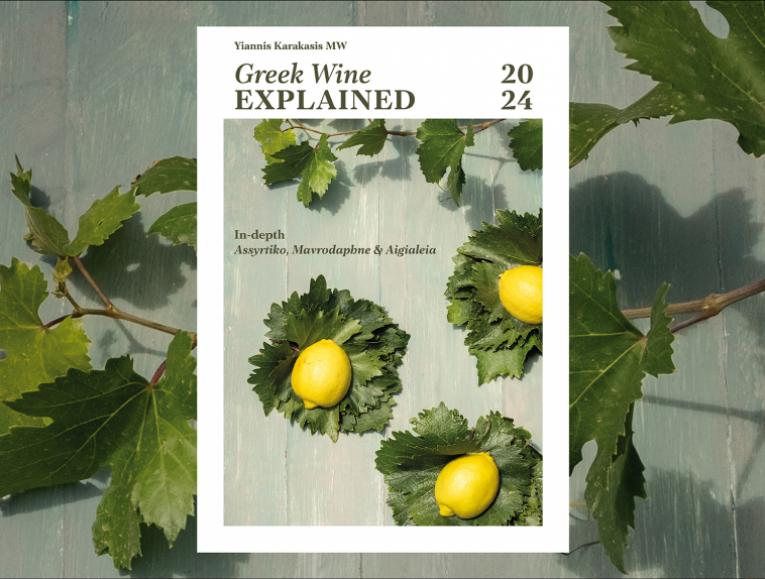What will be the next big thing in Greek wine after Santorini?
By Yiannis Karakasis MW
Over the last decade, Assyrtiko from Santorini has gained great acclaim in the world of wine, and this has contributed significantly to the fame Greece has acquired as an emerging wine country. Assyrtiko has particularly captivated the attention of sophisticated North American markets like that of New York City. Eric Asimov, the wine writer for the New York Times, has repeatedly praised the virtues of Assyrtiko, while venues as prestigious as the three-Michelin-starred Eleven Madison Park have embraced these wines and their distinctive salty footprint. Nevertheless, Greece also has a plethora of other native varieties—over 200 according to the Greek database—which grow on spectacular terroirs, and this cannot but prompt the question of what could be next for the country’s wine industry.
The Uniqueness of Santorini
Great wines often arise from hardship. Santorini is undoubtedly such a case; people and plants alike are forced to fight the climatic extremes, arid conditions, and aggressive winds (regularly above nine on the Beaufort scale). On the island’s ancient, phylloxera-free, and volcanic soils, Assyrtiko, "King of the Aegean," delivers tiny yields that can be as low as five hectoliters per hectare (predicted yields for the 2019 harvest) but produce world-class wines marked by high ripeness and a balancing, profound minerality.
But while things are moving in the right direction, not everything is a bed of roses. Unfortunately, Santorini’s vineyard, which has been described as the "Jurassic Park of vines," is limited and facing fierce competition from rural development as the island has evolved into a tourist destination. In Thera and Thirasia, which make up the Santorini PDO region, there are currently no more than 1,100 hectares of total plantings, most of them owned by 1,000 growers—not producers. Assyrtiko accounts for 70 to 75% of these; this amounts to approximately 800 hectares of a total of 1,900 hectares of Assyrtiko plantings throughout the country. Thus, about 40% of all Greek Assyrtiko is produced in Santorini. The annual production of the entire island is approximately 2,000 tons, although in 2018, it was roughly 1,700 tons and the prediction for 2019 is even lower, down to 900 tons. This means that a growing number of producers are competing with each other for limited supplies of Assyrtiko, which has caused prices to skyrocket. Grape prices rose from 0.85 euro per kilogram in 2010 to 5.00 euro per kilogram in 2018 (data from the South Aegean Region), which affected prices of wine accordingly.
What Will It Take?
MW Mark Andrew argues in his MW research paper "How can dry Assyrtiko from Santorini establish itself as a recognized fine wine in the eyes of London’s premium on-trade?’’ that in order to tell a successful wine story, in the category of fine wines, an attribute not related to wine quality is necessary. "Non-wine quality can be derived from various sources—for example, the quality of the cuisine (in the case of Spain or Sicily), the quality of environmental factors (like the alpine conditions of the Jura), or quality of the perceived lifestyle (in the case of California),’’ he explains.
This is a key to evaluating the next big thing for Greek wine. While there are many regions and special terroirs in the Greek vineyard that produce exciting and distinctive wines, the inherent wine qualities should be supported by another story. It may be local cuisine, a famous tourist attraction, or a holiday destination—things that are, in fact, Greece’s strong points. Additionally, the issue of critical mass must be addressed. The next big thing in Greek wine needs to go beyond limited production and scarcity to cover more markets with continuity in supply. Otherwise, the risk of losing the message is high.
New Developments
Sofia Perpera, who has led the Greek wine campaign in the US and Canada, believes that Crete will be the next Greek region noticed by the international wine market. As for grapes, she notes, "The next shift, in terms of grape varieties, will probably focus on Assyrtiko from outside Santorini. Another variety to look out for is Robola from Cephalonia." Along the same lines, Manolis Giamniadakis, one of Greece’s wine business experts, says that with Santorini at its limits, the next bet will be to bring the success of other regions and varieties to the fore. He sees Crete and Cephalonia as obvious candidates, alongside a new category of rosé wines.
It seems reasonable to follow the Assyrtiko path, capitalizing on Santorini’s success, but there are two pitfalls. The first is that Assyrtiko from the mainland is not as distinctive; this places it in the more mainstream category, where it cannot make a real difference in premium markets. The second is that if we follow this line of thinking, Greece will still be talking only about Assyrtiko. When the dust has settled, the wine industry might be left with empty hands.
The Xinomavro story is quite compelling, both within the Naoussa region and in the rising regions of Amynteo, Rapsani, Siatista, Velventos, and Goumenissa. But while these wines may appeal to Nebbiolo fans, Xinomavro lacks the factor of non-wine quality mentioned above as well as critical mass, with only a handful of producers making over 50,000 to 100,000 bottles. In addition, most of the wines need considerable bottle aging to mellow their intense tannic load. While Xinomavro may grow in popularity, it seems likelier that it will achieve more moderate fame as compared to Assyrtiko.
There are a number of promising producers and terroirs that lack non-wine qualities, sufficient volume, and/or wine quality. Rapsani, for instance, may have the second greatest marketing message after Santorini, since the vineyards are located at the foothills of Mt. Olympus, home to the 12 gods. Unfortunately, there are only four producers in the area. The high-altitude vineyards of Aigialeia in the Peloponnese are stunning terroirs that exceed 1,000 meters, but they are weak in their non-wine qualities. Likewise, Agiorgitiko from Nemea and Moschofilero from Mantinia are exciting grapes today, but wine quality has room for improvement, and neither region has strong non-wine assets.
Peloponnese boasts stunning landscapes and historic sites. It furthermore has a very strong network of producers. Wines of Peloponnese has over 60 members, who actively promote the brand. Yet its offerings are perhaps too diverse to present a precise marketing message for international markets.
Last but not least comes the establishment of a new category of darker rosés, a style better suited to the climate, while also more gastronomic and vinous. This could be an opportunity to be distinctive, yet rosé is not highly regarded in premium markets, and lighter-hued rosés remain most popular in regions with high rosé sales, such as the US and UK.
The Islands
Without a powerful story like that of Santorini, it seems unlikely that a single place or variety will be able to come forward as the next big thing. The Greek islands, however, collectively offer multiple regions and grapes. And what is the one thing that 35 million tourists bring back home after their holiday? The best memories from the islands they have visited. Why not also take a bottle of a distinctive wine?
The Aegean Sea has more than 200 islands and around 4,500 hectares of vineyards. While Santorini may still be the star, many islands are catching up fast, as they offer unique varieties, exciting wines, and breathtaking terroirs. An island-focused concept combining the regions of Crete, Paros, Tinos, and Cephalonia seems a viable next big thing, and this could be marketed as "the Islands."
Crete comes first. Over the last decade, the wine industry in Crete has emphasized both quality and indigenous varieties, shunning the oxidized wines of the past. The privileged terroir of the upland and mountainous areas has been recognized and highlighted; the potential of autochthonous grape varieties has been unlocked. Greek and international experts are speaking enthusiastically about a new wine success story. But while the Cretan star variety Vidiano is exciting, it is by no means Assyrtiko. The red Liatiko is a difficult variety, although the scarce quantities of the Economou wines have created waves. Other notable producers are Diamantakis, Douloufakis, and Lyrarakis. Crete has history, name recognition, high production, diversity, local gastronomy, and tourism, but its other varieties, while interesting, haven’t produced a truly "great" wine.
Cephalonia has a similar story, but with more focus on premium and terroir-driven wines from producers such as Gentilini, Petrakopoulos, and Sclavos. Located in the Ionian Sea, it is the sixth largest Greek island. The white Robola shows great promise. It is planted in vineyards that rise to 850 meters, mainly in the central and southern parts of the island. In the regions with an abundance of limestone soils, the wines tend to be more elegant and mineral-driven—these the Italians would call vino di sasso (wine of the stone). In the Paliki region, more clay-based soil yields fatter whites as well as structured reds from Mavrodaphne, a variety that has been rediscovered for the production of dry reds. Other local varieties include Zakynthino, Vostilidi, and Tsaousi. Yet on its own, Cephalonia lacks critical production numbers—it is, in a sense, Crete inverted, with premium wines but less production.
Two more Aegean islands complete the picture: Paros and Tinos. They are close to one another but have very different stories. Paros is extremely touristic, with a strong food culture and wines based on the local white Monemvasia. There is no phylloxera, and the vineyard is planted to a great extent with bush vines. Tinos, on the other hand, only emerged as a premium wine region during the last decade. It offers sought-after wines, which came first from T-Oinos Winery, since followed by others such as Domaine de Kalathas and Volacus. The island recently experienced a culinary explosion as well.
Conclusions
Although the Greek vineyard has many interesting terroirs, there is not a single one that, on its own, can follow in the footsteps of Santorini’s Assyrtiko. The first reasonable possibility is to talk about Assyrtiko in general, but this does not broaden the discussion. Though Crete, Cephalonia, Tinos, and Paros cannot stand on their own, as each fulfills only some of the criteria needed for a region to develop a strong identity as a fine wine region, "the Islands" together offer quality, name recognition, lifestyle, and gastronomy—enough to become the next big thing for Greek wine.
Originally published on GuildSomm.com. Used with permission from the publisher.
Cover photo by Evripidis Apostolidis




